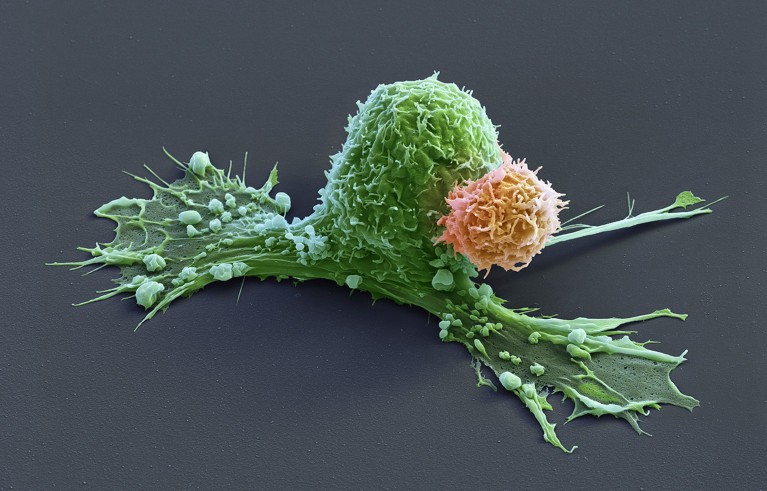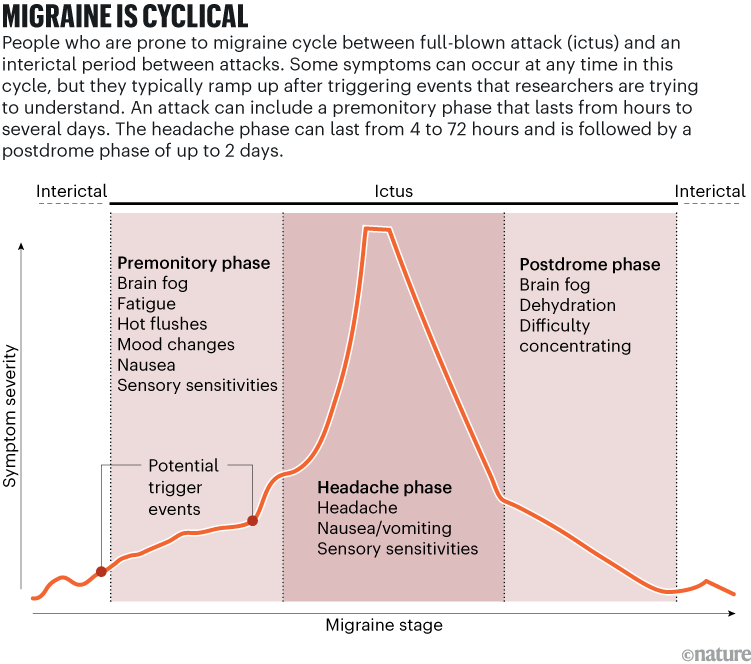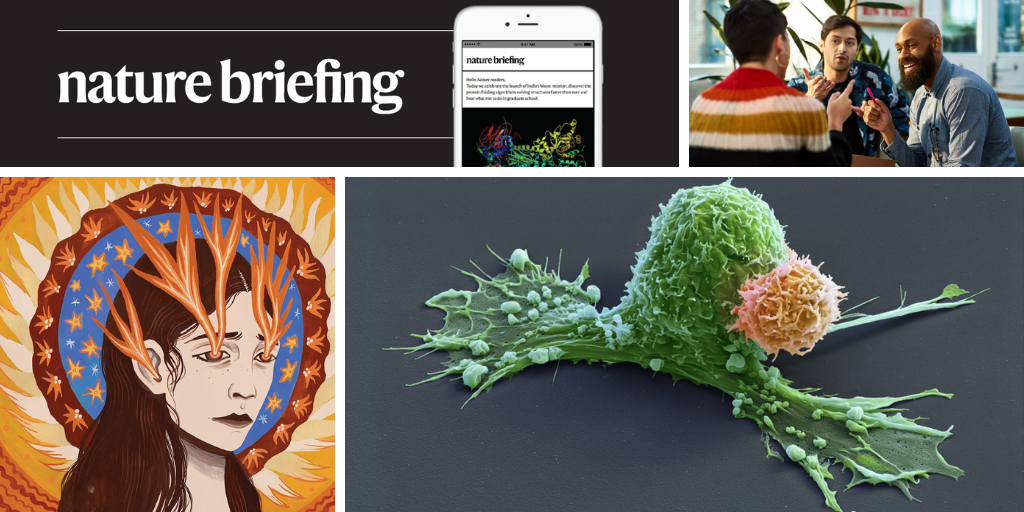Hello Nature readers, would you like to get this Briefing in your inbox free every day? Sign up here.

A CAR-T cell (orange) attacks a cancer cell (green), which is starting to contract.Credit: Eye Of Science/Science Photo Library
A woman who received CAR-T-cell therapy to treat a nerve-cell cancer when she was 4 years old is still cancer-free 19 years later, the longest reported cancer remission following the treatment. She received the therapy — which uses engineered immune cells called CAR T cells — in 2006. Since then, CAR-T-cell therapies have proved highly effective in some blood cancers, but researchers have struggled to repeat that success against solid tumours. That makes the latest results particularly good news, says paediatric oncologist Sneha Ramakrishna.
Reference: Nature Medicine paper
Researchers are investigating whether the smell of an Egyptian mummy could enable them to discover what materials were used to preserve the body without disturbing it. They extracted air from the sarcophagi of nine mummies and asked expert smellers to rate the scents for contemporary odour qualities such as woodiness and sweetness. They then analysed each air sample to identify volatile compounds responsible for certain smells. The team also hope their work can provide curators with a synthetic recreation of how mummies smell to make exhibits more engaging.
Reference: Journal of American Chemical Society paper
The development of spoken language might have been influenced by a protein variant unique to humans. The NOVA1 protein, which is involved in brain development, differs between humans and animals by a single amino acid. To test the impact of such a small tweak, scientists used CRISPR gene-editing technology to replace the gene that expresses NOVA1 in mice with the version found in humans. The swap made the mice’s vocalizations more complex, which could suggest that the variant causes subtle brain changes that affect our ability to communicate.
Reference: Nature Communications paper
Features & opinion
Roughly a billion people worldwide experience migraine — a neurological condition that can cause severe headaches, nausea and sensitivity to light and sound. Recently approved drugs that alleviate some of the headache symptoms of migraine have redefined it as “a treatable and manageable condition”, says neuropharmacologist Diana Krause. But what makes a person’s brain prone to migraine, and why it affects people differently, is still somewhat of a mystery. To stop migraine completely “we need to create new frameworks to understand how the brain activates the whole system of migraine”, says neurologist Arne May.

Source: N. Karsan & P. J. Goadsby Nature Rev. Neurol. 14, 699–710 (2018).
Carl Zimmer’s Air-borne “is a fascinating story of the evolution of a highly interdisciplinary field over centuries”, writes environmental engineer Linsey Marr in her review. In tracing the history of ‘aerobiology’ from ancient Greece to the modern day, Zimmer explains why the idea that microbes can spread through the air and cause disease was contentious for centuries, and how the COVID-19 pandemic finally set the record straight. The book “presents both a birds-eye and a microscopic view of life in the atmosphere and its profound effects on humans,” says Marr.
Thanks to recent progress in synthetic genomics technologies, “you can mimic and test evolutionary steps which otherwise would have taken billions of years to evolve — or wouldn’t have evolved ever”, says synthetic genomicist Akos Nyerges. But progress doesn’t always equal smooth sailing. Each tweaked or deleted gene can throw up substantial and unexpected challenges, which has laid bare how much we still don’t understand about the fundamental language of the genome. When it comes to heavily modified genomes, says Nyerges, “we underestimated how complex biology is”.
Today I’ve found a way to keep myself safe in shark-infested waters, if only I can get my hands on some cuttlefish (Sepia officinalis) ink. Researchers found that the ink might overwhelm sharks’ heightened sense of smell, which would deter them from any areas where it had been released. In theory, the effect could also keep sharks safe, the team says. A synthetic version of the ink could steer them away from dangerous, human-infested waters such as fishing zones.
Help us keep this newsletter out of danger by sending your feedback to [email protected].
Thanks for reading,
Jacob Smith, associate editor, Nature Briefing
Want more? Sign up to our other free Nature Briefing newsletters:
• Nature Briefing: Careers — insights, advice and award-winning journalism to help you optimize your working life
• Nature Briefing: Microbiology — the most abundant living entities on our planet — microorganisms — and the role they play in health, the environment and food systems
• Nature Briefing: Anthropocene — climate change, biodiversity, sustainability and geoengineering
• Nature Briefing: AI & Robotics — 100% written by humans, of course
• Nature Briefing: Cancer — a weekly newsletter written with cancer researchers in mind
• Nature Briefing: Translational Research — covers biotechnology, drug discovery and pharma


